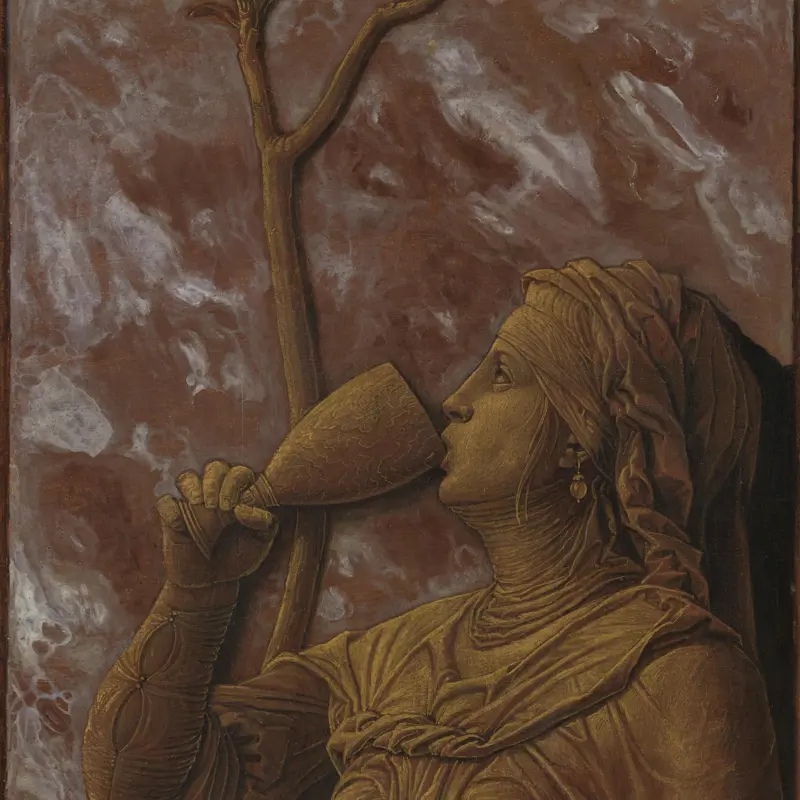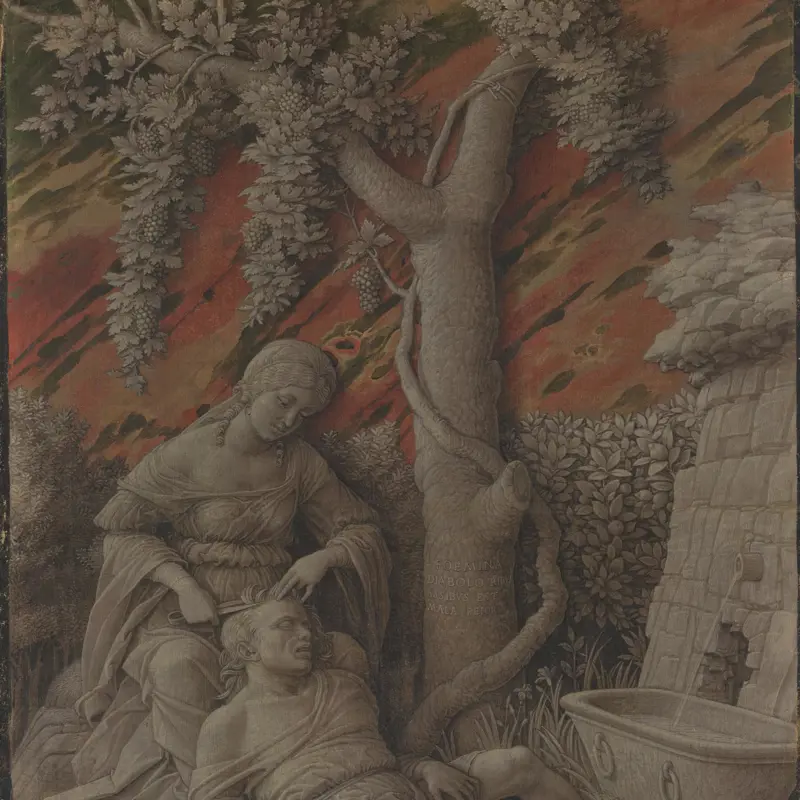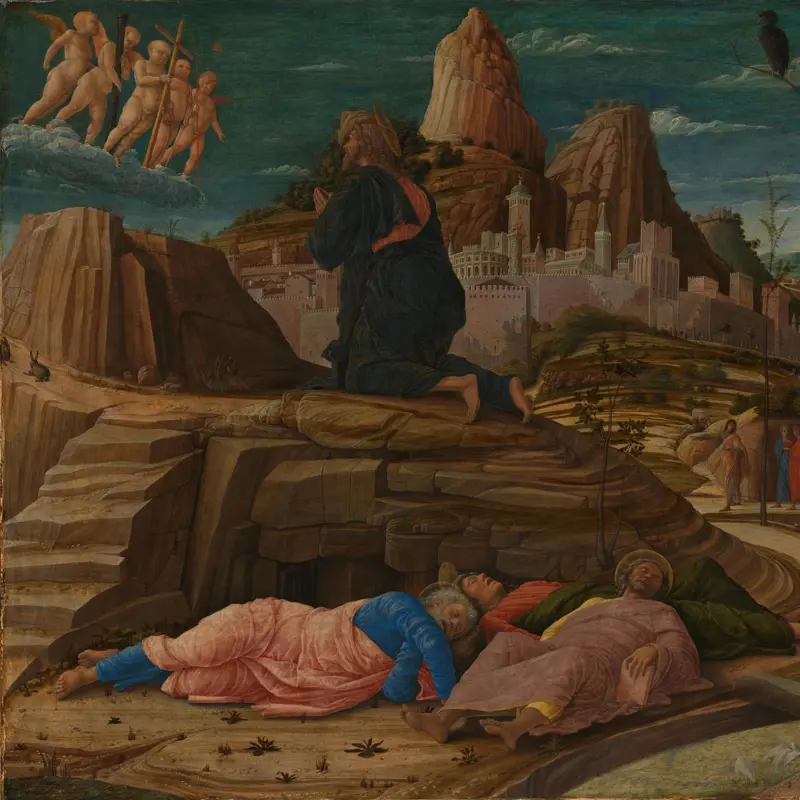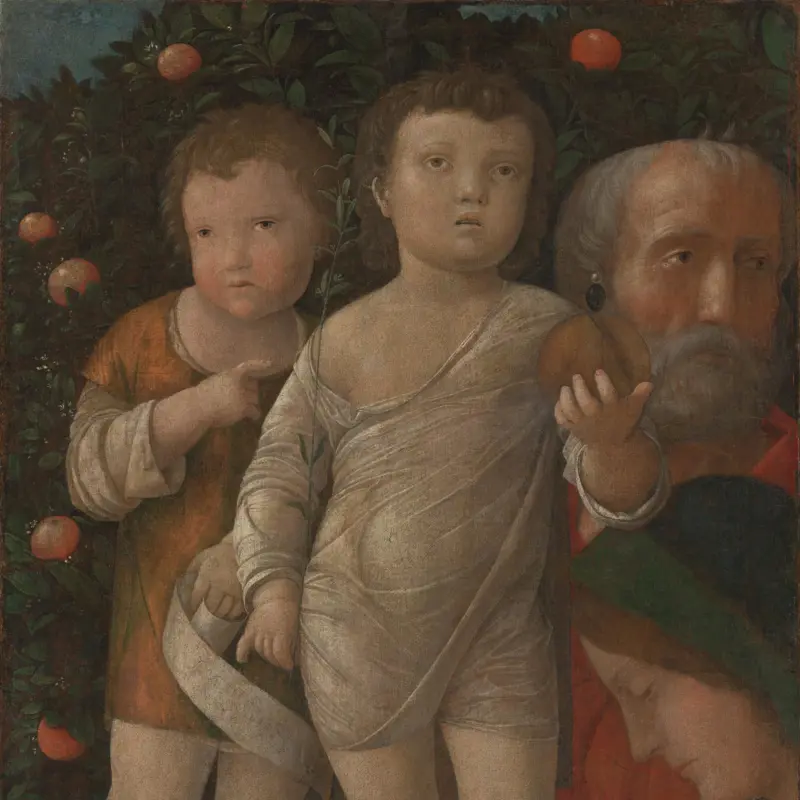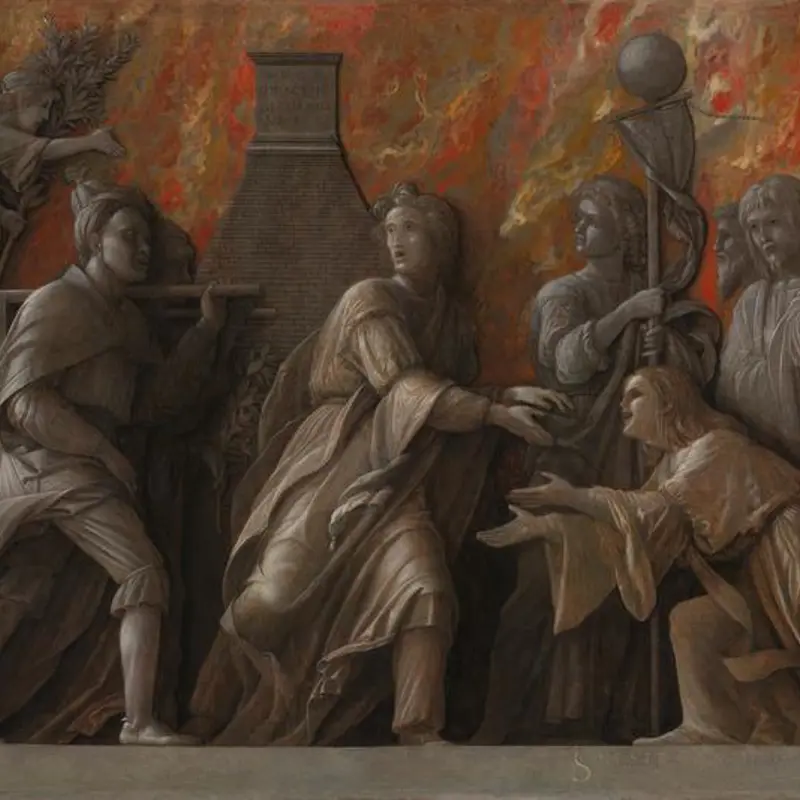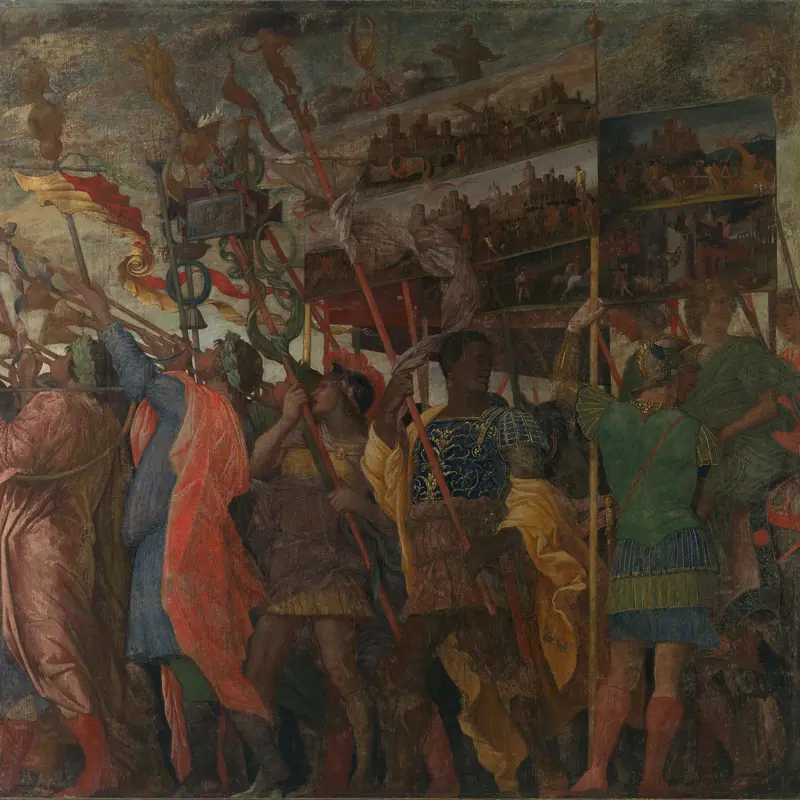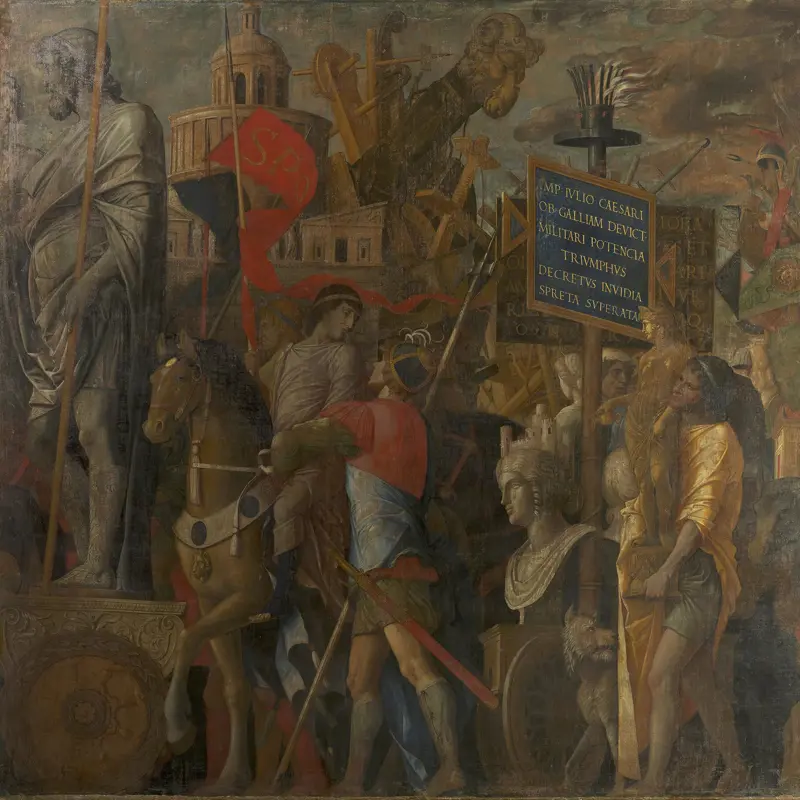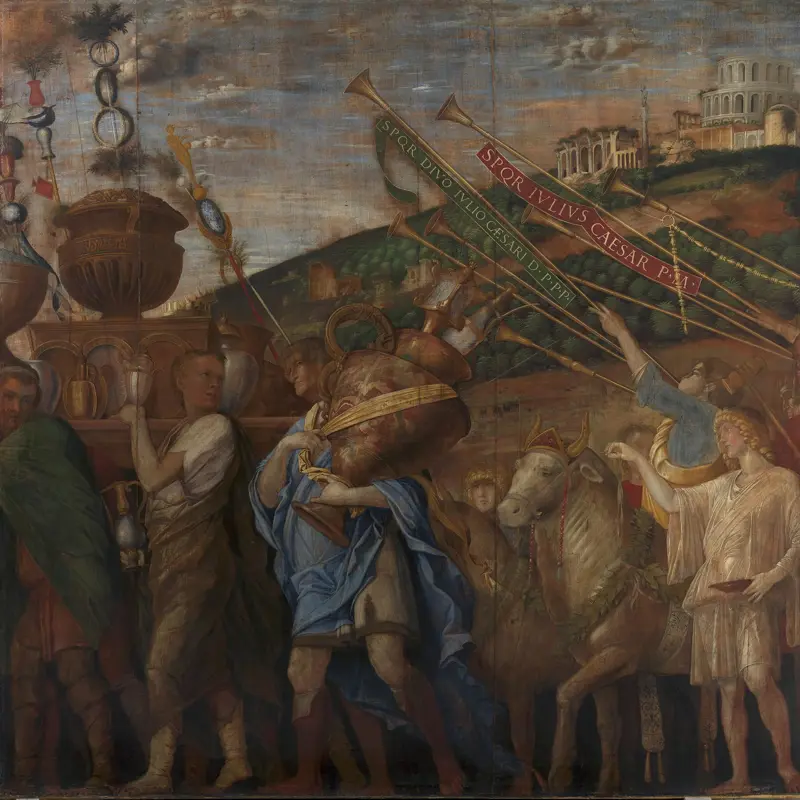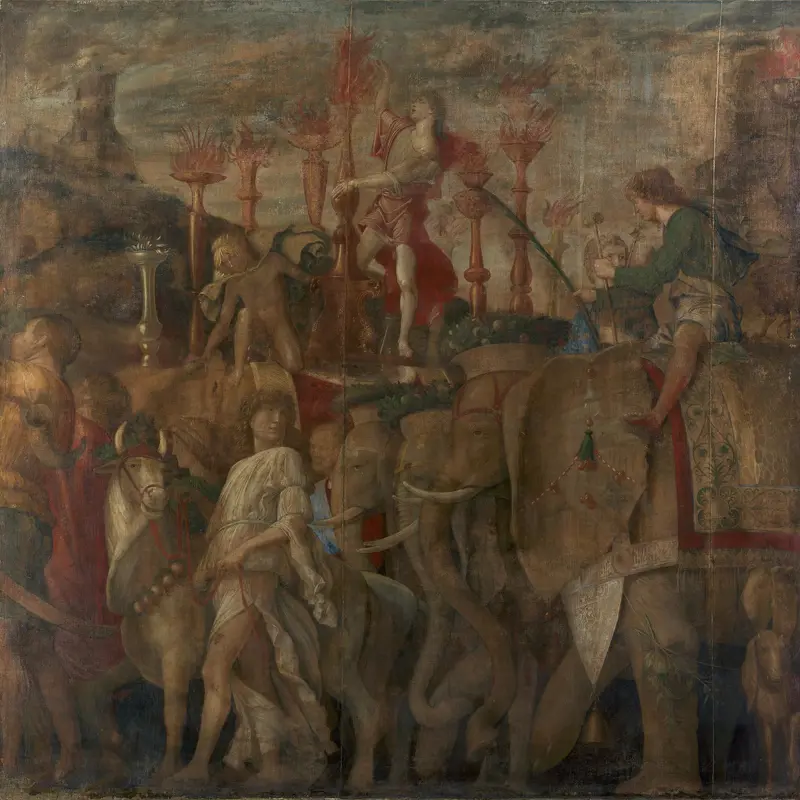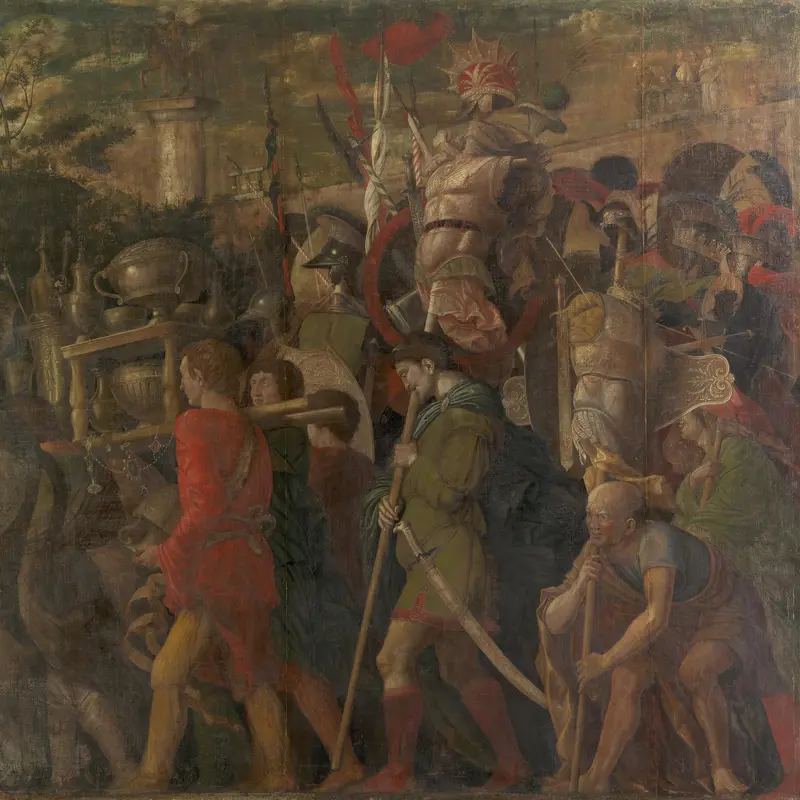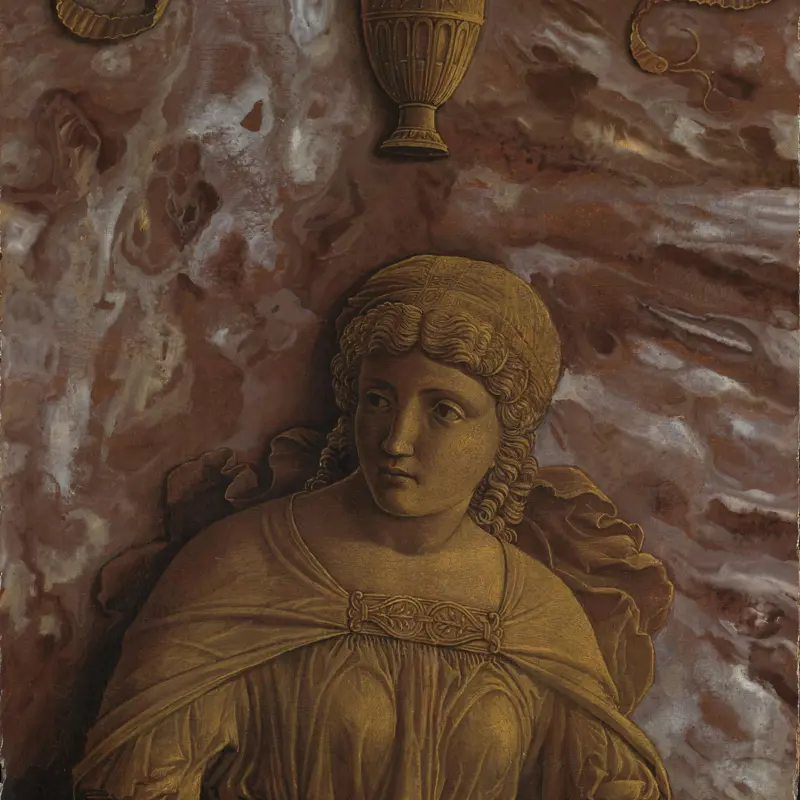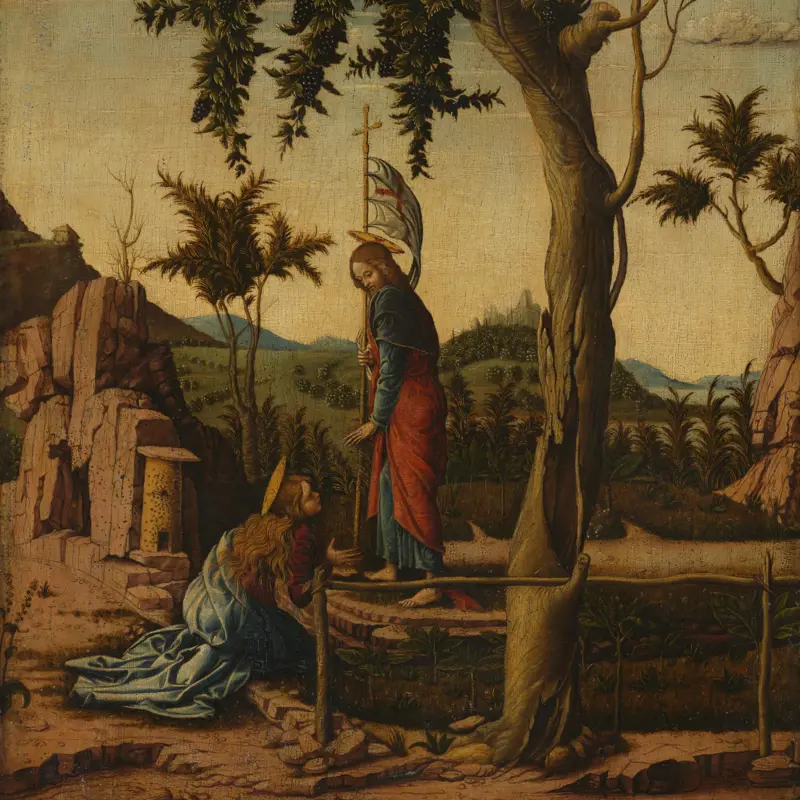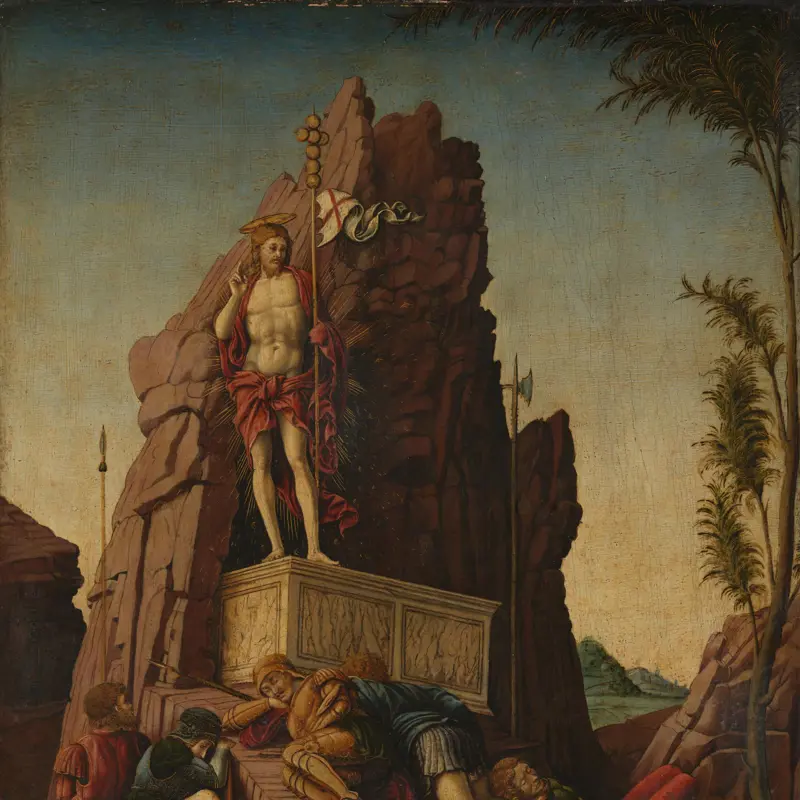Andrea Mantegna, 'The Virgin and Child with Saints', about 1490-1505
About the work
Overview
The Christ Child stands on the Virgin Mary’s lap, making a gesture of blessing. She is seated under a red canopy, between John the Baptist and Mary Magdalene, who looks up towards heaven.
Mary Magdalene raises up a small pot, a reminder of the spices she used to anoint Christ’s body after his death. The Virgin’s solemn expression as she rests her head against that of her child is one of maternal tenderness, but also an indication of her grief to come. Along with John the Baptist’s cross and Mary Magdalene’s ointment, it is a reminder of the fate of the infant on her lap: his crucifixion and death.
We do not know which church this altarpiece was made for. It is painted on canvas, so Mantegna could have painted it in his studio in Mantua, rolled it up and sent it to wherever it was required.
Key facts
Details
- Full title
- The Virgin and Child with the Magdalen and Saint John the Baptist
- Artist
- Andrea Mantegna
- Artist dates
- about 1431 - 1506
- Date made
- about 1490-1505
- Medium and support
- egg tempera on canvas
- Dimensions
- 139.1 × 116.8 cm
- Inscription summary
- Signed; Inscribed
- Acquisition credit
- Bought, 1855
- Inventory number
- NG274
- Location
- Room 14
- Collection
- Main Collection
- Frame
- 15th-century Italian Frame
Provenance
Additional information
Text extracted from the ‘Provenance’ section of the catalogue entry in Martin Davies, ‘National Gallery Catalogues: The Earlier Italian Schools’, London 1986; for further information, see the full catalogue entry.
Exhibition history
-
2011Devotion by Design: Italian Altarpieces before 1500The National Gallery (London)6 July 2011 - 2 October 2011
-
2017Loan to the Museo Civico (Viterbo)Museo Civico (Viterbo)27 February 2017 - 7 July 2017
-
2018Mantegna and BelliniThe National Gallery (London)1 October 2018 - 27 January 2019
-
2018Mantegna and Bellini: Masters of the RenaissanceGemäldegalerie (Berlin)1 March 2019 - 30 June 2019
Bibliography
-
1910F. Knapp, Andrea Mantegna: Des Meisters Gemälde und Kupferstiche, Stuttgart 1910
-
1951Davies, Martin, National Gallery Catalogues: The Earlier Italian Schools, London 1951
-
1978C. Gould, The Draped Figure, Themes and Painters in the National Gallery 2, 2nd edn, London 1978
-
1986Davies, Martin, National Gallery Catalogues: The Earlier Italian Schools, revised edn, London 1986
-
1986R. Lightbown, Mantegna: With a Complete Catalogue of the Paintings, Drawings and Prints, Oxford 1986
-
1988J. Burckhardt, The Altarpiece in Renaissance Italy, ed. P. Humfrey, Oxford 1988
-
1991J. Dunkerton et al., Giotto to Dürer: Early Renaissance Painting in the National Gallery, New Haven 1991
-
1995J. Brown, Kings and Connoisseurs: Collecting Art in Seventeenth-Century Europe, New Haven 1995
-
1998N. Penny, 'The Study and Imitation of Old Picture-Frames', The Burlington Magazine, CXL/1143, 1998, pp. 375-82
-
2001
C. Baker and T. Henry, The National Gallery: Complete Illustrated Catalogue, London 2001
-
2002A. Hollander, Fabric of Vision: Dress and Drapery in Painting (exh. cat. The National Gallery, 19 June - 8 September 2002), London 2002
-
2004A. De Nicolò Salmazo, Andrea Mantegna, Geneva 2004
-
2005C. Higgitt and R. White, 'Analyses of Paint Media: New Studies of Italian Paintings of the Fifteenth and Sixteenth Centuries', National Gallery Technical Bulletin, XXVI, 2005, pp. 88-104
-
2024C. Elam and G. Rebecchini, Mantegna: The Triumphs of Caesar, London 2024
About this record
If you know more about this work or have spotted an error, please contact us. Please note that exhibition histories are listed from 2009 onwards. Bibliographies may not be complete; more comprehensive information is available in the National Gallery Library.

